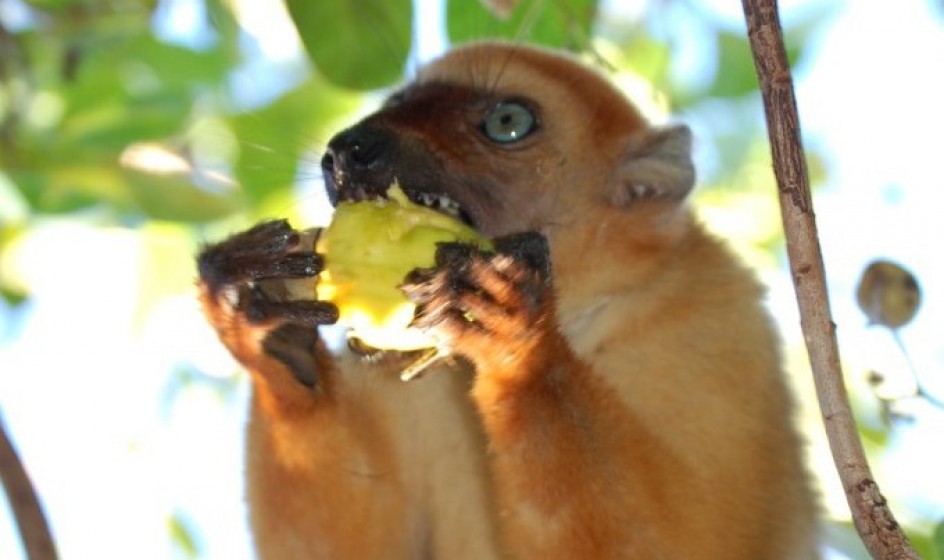

Blue-eyed Black Lemur

Protecting one of the most threatened lemur species, the blue-eyed black lemur, in an unprotected habitat
The blue-eyed black lemur (Eulemur flavifrons) is restricted to the northwestern region of Madagascar. Sahamalaza-Iles Radama National Park is its only protected habitat but this species also occurs in unprotected forests including the adjacent forest of Andilambologno. The Andilambologno forest possesses high endemic biodiversity including lemurs, birds, reptiles and amphibians. As Andilambologno forest is still unprotected and no lemur conservation actions have been undertaken, it is important to advance the conservation in this unprotected forest as well to ensure effectiveness of protection in its protected forest habitat.
Activities will focus on updating the lemur population estimate and threats by conducting lemur surveys in the protected and unprotected habitats, reinforcing the protection of the forest habitat by carrying regular forest patrols, improving the living conditions of the local community by implementing alternative livelihoods, and involving the local communities in conservation activities through education and outreach activities. The proposed project is not only essential to ensure the survival of the lemur and protection of its forest habitat but also vital in incentivizing the local communities in the sustainable use and management of their natural resources.
Species: Blue-eyed black lemur (Eulemur flavifrons)
Region: Madagascar
Implementing partner: Mikajy Natiora Association
Funding period: Januar 2022 - December 2022
Project goals
- To reduce the unsustainable dependence on natural resource and to minimize habitat loss and hunting faced by the blue-eyed black lemur
- To improve living conditions of the local community by promoting alternative and sustainable livelihoods
- To increase the knowledge about the protection of the forest amongst local people and create awareness of the importance of the lemur conservation
Activities
- To provide training for patrol units for the national park and the unprotected forest
- To conduct transect surveys to estimate the lemur population in its habitats, following the training of four community members as forest guides